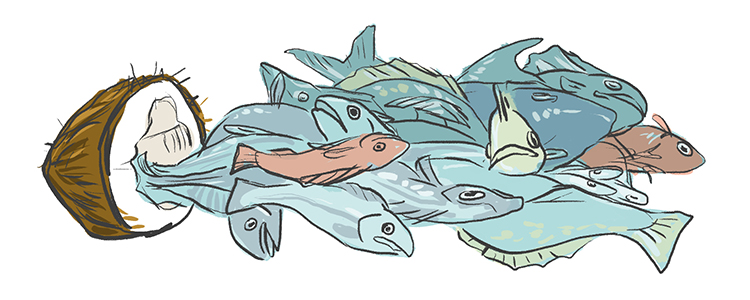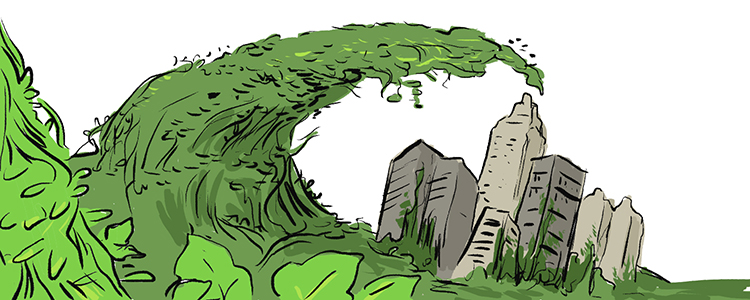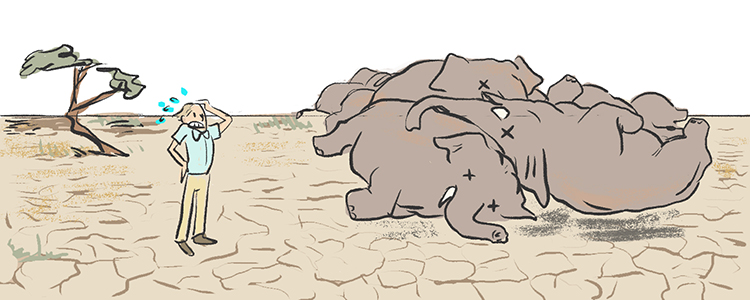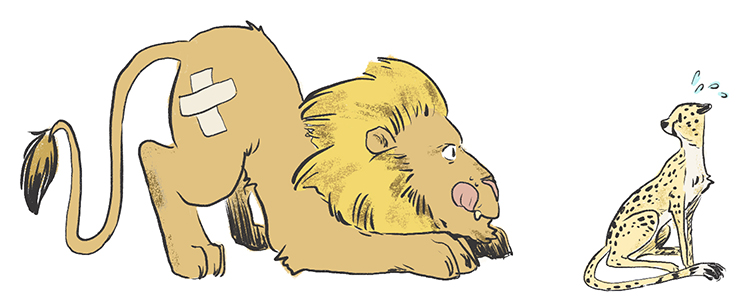The best-laid plans of scientists and environmentalists can often go awry—but sometimes they backfire spectacularly. The following cautionary tales are a reminder of just how the road to ecological hell can be paved with good-intentioned conservation methods.

In 2004 the nation of Kiribati (no, that’s not a Star Trek reference, it’s an island in the Pacific) was worried that its waters were being overfished, so it came up with what seemed like a reasonable strategy to combat the problem: It offered subsidies to people if they’d switch from fishing to picking coconuts. But in 2006 and 2007 when Brown University researcher Sheila Walsh investigated whether the program had been successful, she found it was actually increasing fishing activities around Kiribati—by about a third. After interviewing lots of Kiribatians, Walsh discovered that people were able to work fewer hours with the higher-paid coconut work, after which they turned to recreational fishing.
“It hit us like a bumper sticker saying — a bad day fishing is better than a good day working. And that’s sort of the story here,” Walsh told NPR.
Postscript: In a promising move, last year Kiribati President Anote Tong announced a ban on commercial fishing starting January 2015 in the Phoenix Islands, a protected area about the size of California. Now, it’s hurry up and wait to see how successful (or not) that move winds up being.
Monarch butterfly populations have cratered, falling more than 96 percent from the 1990s to 2014, according to Scientific American. These lovely insects are disappearing because of numerous factors. The milkweed the butterflies eat, and also rely on to breed, is being eradicated by farmers (it is a weed, after all). Winter storms and logging have also taken their toll; in the future, climate change may cause the environmental cues that trigger monarch migration to go haywire.
Many people have tried to give monarchs a safe refuge by planting milkweed in the gardens. But unfortunately, the type of milkweed that’s most commonly available to well-meaning butterfly lovers is tropical milkweed, which is easy to grow but which does not die back in winter like milkweed varieties native to North America. In January, University of Georgia researcher Dara Satterfield and colleagues published research showing that planting this non-native milkweed has the unintended side effect of increasing the likelihood the monarchs will be infected with a devastating parasite.
“The problem is not with tropical milkweed per se, but is rather with the winter-breeding behaviors that it enables” in the butterflies, Satterfield and colleagues wrote in a Q&A. “Tropical milkweed that grows year-round prolongs monarch breeding. In warm parts of the country, if tropical milkweed persists long enough so that multiple generations of monarchs can lay eggs on the same plants, this results in the build-up of [parasite] spores on the milkweed leaves and the transmission of parasites to caterpillars.”
Luckily, butterfly lovers can still help out the monarchs by finding native milkweed to plant through tools like the Milkweed Seed Finder, from the Xerces Society, or by cutting back any tropical milkweed in winter. And the U.S. government may step in to help; it is currently considering endangered species protection [pdf] for the dwindling butterfly.

Kudzu had already made it to America in the 19th century as part of a Japanese garden featured at an exposition in Philadelphia, but the vine really didn’t set down roots until the 1920s. Charles and Lillie Pleas, two plant nursery operators, discovered that farm animals loved eating kudzu, and began promoting it as a forage crop. Because of its strong root system, kudzu also proved to be a powerful tool for controlling soil erosion, and the U.S. government subsidized mass plantings of it across the South.
But within a few decades, kudzu got out of control. The vine can grow about a foot a day and can reach heights of 100 feet [pdf]. It is inexorable in conquering the landscape, climbing over houses, trees, power poles, and anything else in its path. Kudzu kills other plants through a gentle kind of smothering, blocking out sunlight with a dense green blanket of foliage.
Getting rid of kudzu requires almost total eradication, down to the root, which is incredibly costly. The vine has already taken over up to 7 million acres (an area larger than the state of Maryland) of the Southern United States, and may be able to move further north as the climate changes.

Back in the 1960s, ecologist Allan Savory was pretty convinced that elephants were responsible for the widespread phenomenon of desertification (tracts of land becoming dried-up wasteland) in African national parks. Other scientists agreed with him, and they managed to convince various governments to shoot around 40,000 elephants. But overstuffing elephant graveyards didn’t help the grasslands recover.
Postscript: Savory, thankfully, does feel bad about his role in the elephant slaughter. But his massive mistake has not deterred him from thinking up other huge ideas. Now he’s tacked in almost the opposite direction, saying that grasslands actually need a lot more grazing animals, like cattle, moving through to stay healthy— a conservation strategy that’s already attracted a number of science-based critiques.

Canine distemper virus, a pathogen related to measles, can affect big cats as well as dogs—it’s wreaking havoc in tiger populations across the world and it’s cropped up in lions; one such outbreak in 1994 killed about a third of the lion population in the Serengeti. This immediately spurred an effort to help the lions by vaccinating the domestic dogs that can carry the virus. The lions rebounded, probably from a combination of the vaccine drive and their own immune defenses against the virus. But one group of scientists argued that the push to save lions from the virus had the unintended consequence of harming cheetahs, which are often preyed upon by lions. In a 2011 paper published in the journal PLoS ONE, Zoological Society of London researcher Nathalie Pettorelli and her colleagues used computer simulations to predict that vaccination drives aimed at saving lions could eliminate cheetah populations in decades.
“Prioritizing one species over the other could unknowingly lead to the decrease and even potential disappearance of a non-target species,” the scientists wrote. “It is now widely accepted that with current limits to funding, conservationists may be faced with a lose-lose situation where the options may be to (1) do nothing and potentially lose one or several species, (2) guarantee the safety of one or a few species but also condemn others to extinction.”
The paper—and the underlying message—had its critics. Biologist Pieter Kat, in a blog post for the charity LionAid, pointed out that lions and cheetahs have been competing for ages and that cheetahs, being susceptible to the virus as well, could also benefit from dog vaccination drives. Plus, Kat added, to not vaccinate the lions because their recovery might harm cheetahs would just be favoritism of a different sort.
The takeaway from these stories shouldn’t be that conservation is always a “damned if you do, damned if you don’t” situation. There are plenty of successful conservation programs; for example, the recovery of America’s bald eagle, the huge swaths of protected and preserved wilderness areas such as Yellowstone National Park [pdf], and the slow, ongoing recovery of the still-endangered California condor from just 23 raptors worldwide in the early 1980s to 432 condors in 2014, to name just three successes. But as the planet changes ever more drastically, learning from mistakes and knowing how to make hard choices will become ever more important.
Illustrations by Roxanne Palmer
Comments